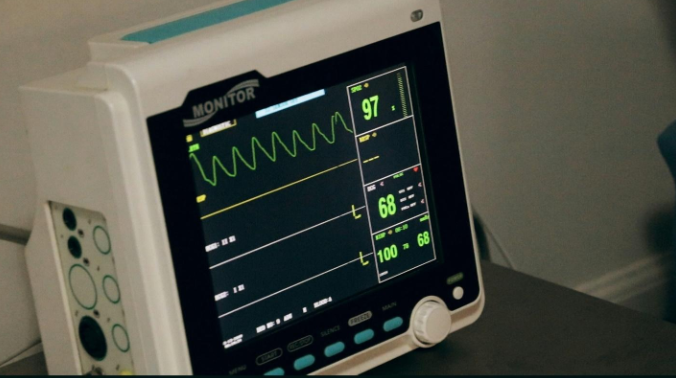The British National Health Service was once known as one of the most prestigious in the world. It provided cutting-edge technologies in the country’s facilities to treat illnesses and reduce premature deaths. The body’s mission was laudable, especially since it conducted numerous important research and studies that contributed to the healthcare industry.
Unfortunately, things changed right before the pandemic, where factors like insufficient funding, staff shortages, and evolving healthcare needs contributed to what the NHS is today― an outdated healthcare system that only makes people’s lives more difficult.
Things got even worse during the pandemic when small cracks in the system exploded, leading to a backlog of care and increasing the waiting times even for regular diagnostics and elective care. Currently, the waiting list for non-urgent care consists of 3.13 million patients who have been waiting for more than 18 weeks for an appointment. Overall, a double of this number is currently waiting for treatment.
So, what went wrong?
Massive staff shortages
One of the most detrimental parts of the failure of the NHS is the fact that the staff shortages led to unprecedented behaviours against patients. Maternity services, for example, have been nothing but delivering disappointments, with errors affecting babies forever. This is why birth injury claims cost the NHS more than £1.1bn yearly.
Authorities repeat the same mistakes over and over, listing caregivers who don’t listen to women’s pains or their inability to show compassion as the main reasons why women start choosing private services instead of public ones. At the same time, the lack of continuity of care due to long-term lists makes the NHS inefficient in terms of maternity needs.
Lack of funding
The crisis in the health service is also caused by the lack of adequate funding to sustain the continuous need for change and adaptation to new health demands. Some experts state that the NHS needs an additional £38bn by 2030 to withstand patients’ changing needs. This could help limit expensive and inefficient treatments, allowing hospitals to offer people basic care.
Unfortunately, the statistics show that the NHS received some of the most significant cuts since 1970, as the government needed to cut staff members and pay to support the pandemic’s newness. The trend has continued until now, as the economy is keeping up with the country’s need to replenish its strengths.
Fast-ageing citizens
The UK’s population is growing older by the decade. According to the Centre for Ageing Better, the number of people aged 50 and over has increased considerably in the past 40 years, and predictions show a similar dynamic in the future, with people aged 80 and over to double to more than 6 million.
Considering these expectations, the medical system should be able to support it, but the truth is that the NHS is far from handling even the current situation. Many older adults find themselves living alone in poor conditions, not being able to receive proper care due to various factors. Older people should access better health services and products because living long in improper conditions is not what society should aim for. A qualitative life is as important as a longevous one.
Technological gaps
Many medical industries worldwide struggle to keep up with the latest technological advancements. In numerous places, pen and paper are the doctors’ main tools in diagnosing patients and organising their schedules, which hinders the digitisation process.
The NHS faces various problems when it comes to technological gaps, including the lack of cyber security and data privacy. The organisation is vulnerable to cyber attacks due to a lack of proper maintenance and mitigation. At the same time, interoperability issues make it difficult to share data across networks. Moreover, legacy systems make current networks outdated, challenging the IT department.
The NHS plans to make the system accessible and available again
As a consequence of the factors presented above, we’ve noticed an increasing number of people switching services and seeking private companies when it comes to getting a diagnosis or treatment for their conditions.
Many of these services and products are much more expensive than public ones, but at least people don’t have to wait over a year for a regular follow-up. Different parties in the country have stated their plans to make healthcare affordable again by adopting new strategies, allowing people to manage their health and budgets at the same time.
Experts consider that a two-tier healthcare system would deepen people’s different lifestyles and incomes, widening inequality, which the healthcare industry shouldn’t be accused of.
But what’s the final solution?
Unfortunately, there’s no single solution to this complex problem. The NHS has been affected by various elements in the past decades, and it would take another few years until governments would slowly but steadily solve them all, bit by bit.
The healthcare industry should benefit from more technological advancements to help staff cope with the increasing number of patients and the complexity of their illnesses. Artificial Intelligence, Virtual Reality, and healthcare trackers could pave the way to a more modern and efficient healthcare system, but most facilities are not ready to adopt them.
At the same time, the medical workforce should be equipped with skills that allow them to be up-to-date with the industry’s requirements, including more digital skills and a new mindset that would hinder their biases and interfere with regular medical activity.
Finally, the medical system needs better collaborations and partners to support its development and offer patients enhanced products and services. Whether we talk about local or international partnerships, all medical facilities need to communicate and collaborate.
What’s your take on the British medical system?
The NHS was one of the best things about the country, as all people could access fair and innovative health services. However, in the past years, various challenges exacerbated people’s need to seek these services from private companies, as the waiting lists from public ones exceeded one year. Therefore, we can say that the medical sector needs some change to deliver the services that are demanded.











